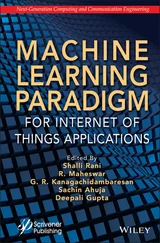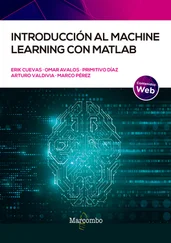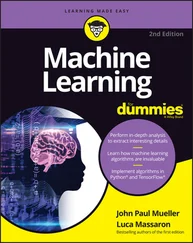322 330
323 331
324 332
325 333
326 334
327 335
328 336
329 337
330 338
331 339
332 340
333 341
334 343
335 344
336 345
337 346
338 347
339 348
340 349
341 350
342 351
343 353
344 354
345 355
346 356
347 357
348 358
349 359
350 360
351 361
352 362
353 363
354 364
355 365
356 366
357 367
358 369
359 370
360 371
361 372
362 373
363 374
364 375
365 376
366 377
367 378
368 379
369 380
370 381
371 383
372 384
373 385
374 386
375 387
376 388
377 389
378 390
Scrivener Publishing
100 Cummings Center, Suite 541J
Beverly, MA 01915-6106
Publishers at Scrivener
Martin Scrivener ( martin@scrivenerpublishing.com)
Phillip Carmical ( pcarmical@scrivenerpublishing.com)
Machine Learning for Healthcare Applications
Edited by
Sachi Nandan Mohanty
G. Nalinipriya
Om Prakash Jena
Achyuth Sarkar

This edition first published 2021 by John Wiley & Sons, Inc., 111 River Street, Hoboken, NJ 07030, USA and Scrivener Publishing LLC, 100 Cummings Center, Suite 541J, Beverly, MA 01915, USA
© 2021 Scrivener Publishing LLC
For more information about Scrivener publications please visit www.scrivenerpublishing.com.
All rights reserved. No part of this publication may be reproduced, stored in a retrieval system, or transmitted, in any form or by any means, electronic, mechanical, photocopying, recording, or otherwise, except as permitted by law. Advice on how to obtain permission to reuse material from this title is available at http://www.wiley.com/go/permissions.
Wiley Global Headquarters
111 River Street, Hoboken, NJ 07030, USA
For details of our global editorial offices, customer services, and more information about Wiley prod-ucts visit us at www.wiley.com.
Limit of Liability/Disclaimer of Warranty
While the publisher and authors have used their best efforts in preparing this work, they make no representations or warranties with respect to the accuracy or completeness of the contents of this work and specifically disclaim all warranties, including without limitation any implied warranties of merchant-ability or fitness for a particular purpose. No warranty may be created or extended by sales representatives, written sales materials, or promotional statements for this work. The fact that an organization, website, or product is referred to in this work as a citation and/or potential source of further information does not mean that the publisher and authors endorse the information or services the organization, website, or product may provide or recommendations it may make. This work is sold with the understanding that the publisher is not engaged in rendering professional services. The advice and strategies contained herein may not be suitable for your situation. You should consult with a specialist where appropriate. Neither the publisher nor authors shall be liable for any loss of profit or any other commercial damages, including but not limited to special, incidental, consequential, or other damages. Further, readers should be aware that websites listed in this work may have changed or disappeared between when this work was written and when it is read.
Library of Congress Cataloging-in-Publication Data
ISBN 9781119791812
Cover image: Pixabay.Com
Cover design by Russell Richardson
Set in size of 11pt and Minion Pro by Manila Typesetting Company, Makati, Philippines
Printed in the USA
10 9 8 7 6 5 4 3 2 1
Machine learning is one of the principal components of computational methodology. In today’s highly integrated world, when solutions to problems are cross-disciplinary in nature, machine learning promises to become a powerful means for obtaining solutions to problems very quickly, yet accurately and acceptably.
When considering the idea of using machine learning in healthcare, it is a Herculean task to present before the reader the entire gamut of information in the field of intelligent systems. It was therefore our objective to keep the presentation narrow and intensive. The approach of this book is distinct from others in that it presents detailed computer simulations for all models presented with explanations of the program code. It includes unique and distinctive chapters on disease diagnosis, telemedicine, medical imaging, smart health monitoring, social media healthcare, and machine learning for COVID-19. These chapters help develop a clear understanding of the working of an algorithm while strengthening logical thinking. In this environment, answering a single question may require accessing several data sources and calling on sophisticated analysis tools. While data integration is a dynamic research area in the database community, the specific needs of research have led to the development of numerous middleware systems that provide seamless data access in a result-driven environment.
Since this book is intended to be useful to a wide audience, students, researchers and scientists from both academia and industry may all benefit from this material. It contains a comprehensive description of issues for healthcare data management and an overview of existing systems, making it appropriate for introductory and instructional purposes. Prerequisites are minimal; the readers are expected to have basic knowledge of machine learning.
This book is divided into 22 real-time innovative chapters which provide a variety of application examples in different domains. These chapters illustrate why traditional approaches often fail to meet customers’ needs. The presented approaches provide a comprehensive overview of current technology. Each of these chapters, which are written by the main inventors of the presented systems, specifies requirements and provides a description of both the chosen approach and its implementation. Because of the self-contained nature of these chapters, they may be read in any order. Each of the chapters use various technical terms which involve expertise in machine learning and computer science.
The chapters of the book are organized as follows:
Chapter 1introduces the fundamental concepts of machine learning and its applications, and describes the setup used throughout the book. It is now realized that complex real-world problems require intelligent systems that combine knowledge, techniques and methodologies from various sources.
Chapter 2describes the actual machine learning algorithms that are most widely used in practice, and discusses their advantages and shortcomings. It is therefore necessary to work through conventional machine learning algorithms while relating the underlying theme to cutting-edge neuroscience research findings.
Chapter 3explains the study of neuromarketing with EEG signals and machine learning techniques. This is followed by a detailed review of the global function of classifiers and the inner workings. Such a premise provides the fabric for presentation of ideas throughout this text.
Chapter 4elaborates on an expert system-based clinical decision support system for hepatitis B prediction and diagnosis. It develops a working model of the decision support system and its application domain. The clinical decision helps to improve the diagnostic performance.
Читать дальше













